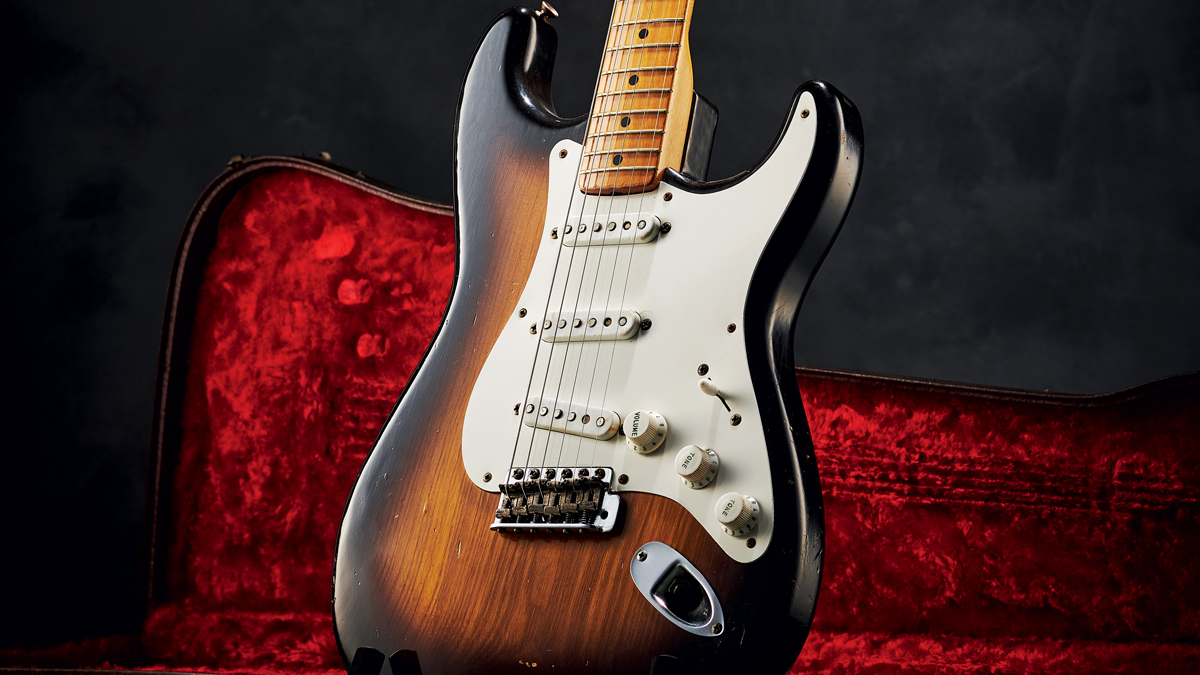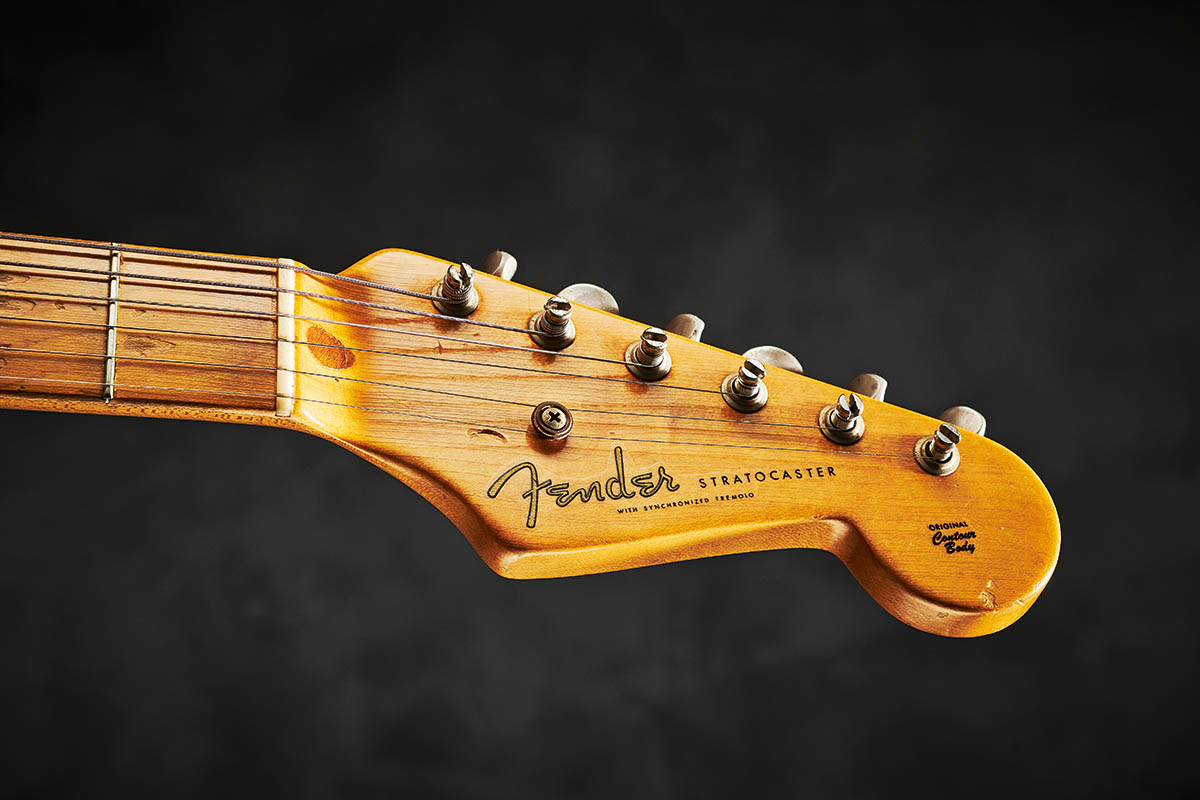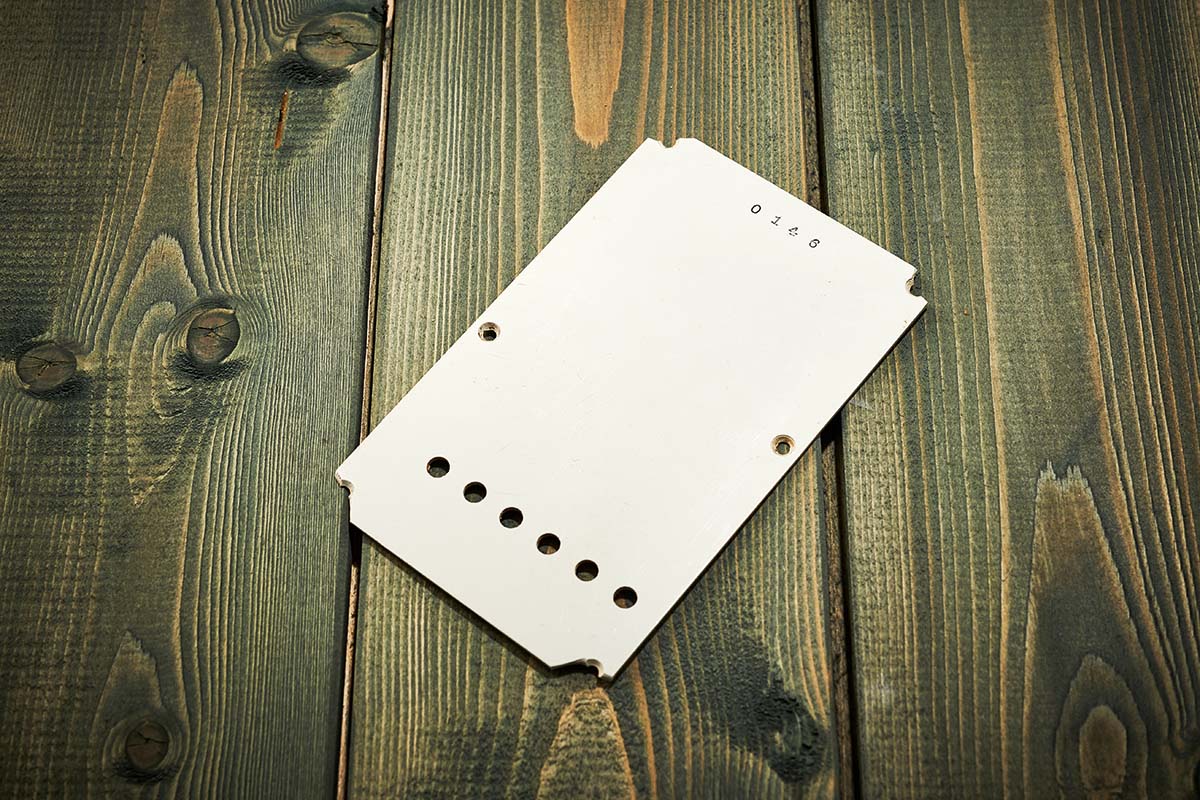Classic gear: 1950s Fender Stratocasters
It did not take long before Fender’s iconic solidbody reached the heights of success

Aside from their fretted maple necks, 1950s Fender Stratocasters can be identified by either a two-tone sunburst (comprising dark brown and yellow) or, from ’58, a three-tone sunburst.
Unfortunately, the red aniline dye used in these later finishes tended to fade severely, much like the ’Bursts/Les Paul Standards of the time. Consequently, many late-50s Strats are misconstrued as having a two-tone finish. However, by 1960, Fender had addressed this issue (as had Gibson) and, from that point onwards, Strats were endowed with a more stable and bolder-looking sunburst.
Released in 1954, the Stratocaster was the first of Fender’s ‘electric Spanish’ solidbodies to feature a sunburst finish as standard. Its existing models, released earlier in 1950 – namely the Esquire and the Telecaster, which was originally known as the Broadcaster – came with a transparent blonde finish that showed off the figuring of the ash body underneath.
Strats were similarly constructed using ash up until mid-1956 when they switched to alder (aside from Strats finished in blonde, which could be ordered for a five per cent upcharge). With their semi-transparent two-tone sunbursts and figured ash bodies, these early Strats (such as the 1954 example pictured opposite) have a distinctive look that immediately dates them to within the first couple of years of production.


The Stratocaster featured a versatile triple-pickup configuration and bespoke vibrato system, and was conceived as a replacement for the “plain Jane” Telecaster, while serving to compete directly with Gibson’s Les Paul Model (released in 1952). Work on the Tele’s successor started as early as 1951, but it would be a few years before Leo Fender felt the design was ready to take to market.
1951
Work on the Telecaster’s successor commences.
Late 1953
Synchronized Tremolo vibrato system design completed.
April 1954
Earliest known Stratocaster (serial number 0100).
October 1954
Full-scale production; ash body; 2-tone sunburst; white single-ply pickguard; round string-tree.
1955
Sharper headstock edges; chunky neck profile retained; c.450 shipped (c.70% increase on 1954).
1956
Alder body (excluding blonde finish); butterfly string tree; V-profile neck.
1957
Transition from polystyrene to ABS plastic parts; V-profile neck.
1958
3-tone sunburst; slimmer neck profile.
1959
‘Slab’ (flat base) rosewood fingerboard; 3-ply (w/b/w) nitrate pickguard.
1960
Fade-resistant red/ bolder 3-tone sunburst.
While Leo was not a seasoned guitarist, through close collaboration with several professional musicians during the design process – notably Rex Gallion, Bill Carson and Freddie Tavares – he was able to realise an instrument that ultimately became not just a classic guitar but also a bona fide icon of popular culture.
As per its predecessor, the Telecaster, it is often said that ‘Leo got it right the first time’ with the Stratocaster. And it’s hard to argue against that sentiment. As opposed to the Les Paul, both have remained in production ever since they appeared during America’s colourful post-war years and their essential blueprints have stayed the same.
Get The Pick Newsletter
All the latest guitar news, interviews, lessons, reviews, deals and more, direct to your inbox!
The majority of the changes Fender implemented on the Strat were cosmetic in nature, while aiming to produce a harder-wearing and better-looking guitar. For example, it was noted the polystyrene pickup covers and knobs were prone to breakage and so these were superseded by a tougher ABS plastic during ’57. A similar change happened in ’59 when the Strat’s white single-layer plastic pickguard was replaced by a three-layer (white/black/white) nitrate type.
The most prominent change also occurred in ’59 when rosewood fretboards were implemented across Fender’s entire range following the introduction of the Jazzmaster the previous year. Unlike lacquered maple, rosewood didn’t appear markedly discoloured with wear, and many preferred the new look overall. It marked the end of an era, but it also signalled the beginning of an exciting new time for the Fender Stratocaster.
- Guitarist would like to thank Vintage ‘n’ Rare Guitars in Bath for showing us this stunning example.
Rod Brakes is a music journalist with an expertise in guitars. Having spent many years at the coalface as a guitar dealer and tech, Rod's more recent work as a writer covering artists, industry pros and gear includes contributions for leading publications and websites such as Guitarist, Total Guitar, Guitar World, Guitar Player and MusicRadar in addition to specialist music books, blogs and social media. He is also a lifelong musician.
“It combines unique aesthetics with modern playability and impressive tone, creating a Firebird unlike any I’ve had the pleasure of playing before”: Gibson Firebird Platypus review
“This would make for the perfect first guitar for any style of player whether they’re trying to imitate John Mayer or John Petrucci”: Mooer MSC10 Pro review










